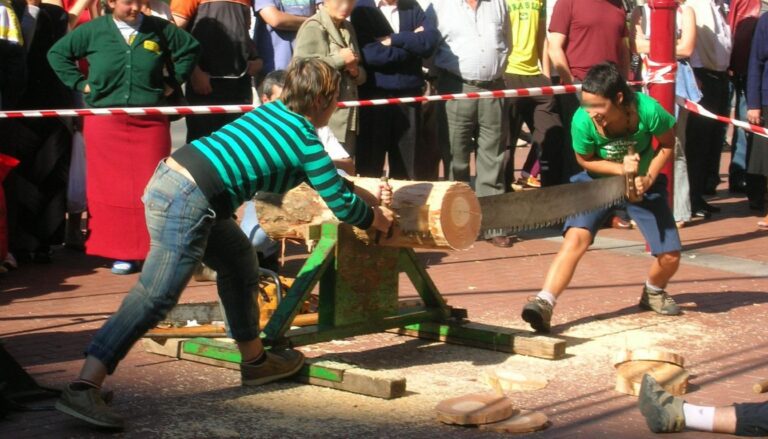Lutefisk, Bergen Norway
In the historic port city of Bergen, where fjords meet the sea and centuries of maritime tradition shape daily life, Lutefisk stands as a testament to Norwegian culinary ingenuity. This distinctive dish, made from dried whitefish treated with lye, represents more than just sustenance – it’s a celebration of cultural heritage that continues to intrigue both locals and visitors. As winter descends upon Bergen’s picturesque harbor, the aroma of this traditional delicacy wafts through the city’s narrow streets, signaling the arrival of the holiday season.
Table of Contents
Origins and History
Lutefisk’s story stretches back to the Viking age, emerging as a practical preservation method in Norway’s harsh climate. The name itself tells its story: “lut” meaning lye and “fisk” meaning fish. Originally, dried cod (stockfish) was preserved using birch ash lye, a technique that:
- Enabled long-term fish storage before refrigeration
- Provided sustenance during long sea voyages
- Created a valuable trade commodity
- Sustained communities through harsh winters
Historical records suggest that Bergen’s position as a major Hanseatic League trading port played a crucial role in spreading this preservation technique throughout Northern Europe.
Cultural Significance
In Bergen and throughout Norway, Lutefisk represents more than just a traditional dish – it embodies cultural identity and historical continuity:
- Central to Christmas celebrations (Julebord)
- Symbol of Norwegian resilience and ingenuity
- Connector between generations
- Important part of Bergen’s maritime heritage
- Source of local pride and community gatherings
The dish often sparks passionate debates among Norwegians, with family recipes and preparation methods passed down through generations, each claiming their version as the most authentic.
Ingredients and Preparation
The transformation of dried cod into Lutefisk is a fascinating process that requires time, patience, and expertise:
Traditional Ingredients:
- Dried cod (stockfish)
- Food-grade lye solution
- Cold water
- Salt
- Traditional accompaniments:
- Boiled potatoes
- Green peas
- Melted butter
- Bacon bits (served separately)
- Mustard sauce
Preparation Process:
- Soaking dried cod in cold water for several days
- Treatment with food-grade lye solution
- Additional water soaking to remove lye
- Careful cooking to achieve proper texture
- Serving with traditional side dishes
Where to Try It
Notable Establishments:
- Bryggeloftet & Stuene – Historic restaurant with traditional recipes
- Enhjørningen – Seafood specialist with seasonal Lutefisk
- Pingvinen – Authentic Norwegian cuisine in casual setting
Neighborhood Recommendations:
- Bryggen Historic District – Traditional restaurants
- Bergen Fish Market area – Seasonal specialists
- City Center – Modern interpretations
Eating Etiquette and Customs
Understanding local customs enhances the Lutefisk experience:
- Traditionally eaten with proper dining etiquette
- Often served as part of a multi-course meal
- Accompaniments are passed around the table
- It’s acceptable to decline a second serving
- Appreciation of the dish’s heritage is welcomed
Seasonal Considerations
Lutefisk has strong seasonal associations:
- Peak season runs from October to December
- Christmas season (Jul) is the primary consumption period
- Many restaurants only serve it during specific months
- Advance reservations are essential during holiday season
- Special Lutefisk events and dinners occur throughout winter
Modern Interpretations
While tradition remains strong, modern approaches have emerged:
- Refined preparation methods
- Contemporary plating techniques
- Modified seasoning options
- Pre-prepared versions in specialty stores
- Fusion dishes incorporating Lutefisk elements
Practical Information and Travel Tips
For the optimal Lutefisk experience:
- Best enjoyed during winter months
- Reservations strongly recommended
- Expect prices ranging from 300-500 NOK per serving
- Many restaurants offer special Lutefisk menus
- Consider joining local food tours
- Ask about the establishment’s specific preparation method
Making Your Lutefisk Journey Memorable
Embrace this unique culinary tradition by visiting Bergen during the winter season when Lutefisk is at its peak. Engage with local chefs and restaurateurs to learn about their specific preparation methods, and don’t shy away from asking questions about the dish’s history. Remember that whether you become a Lutefisk enthusiast or not, experiencing this traditional dish offers a genuine connection to Norwegian culture and its maritime heritage.













